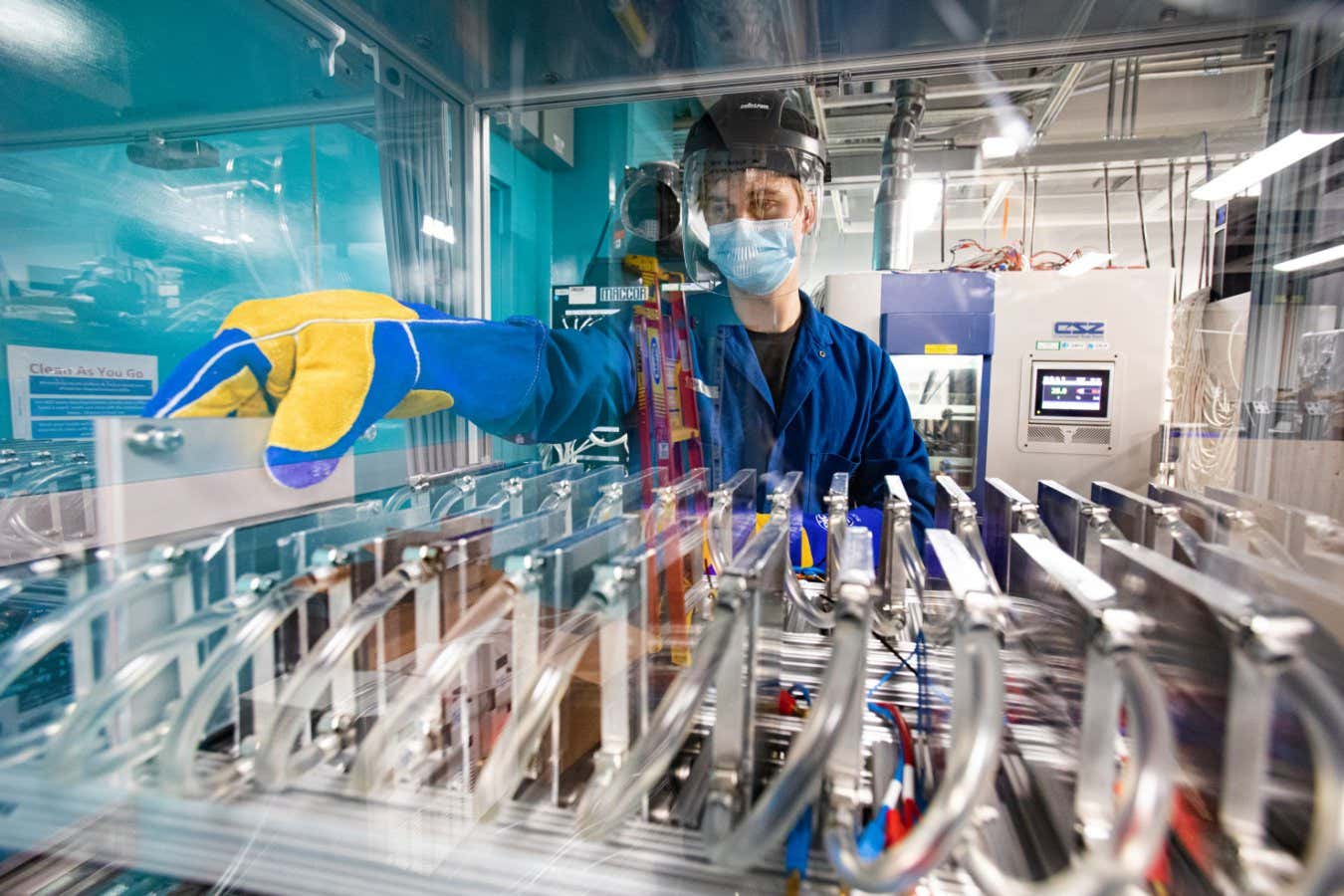A simple change in how new lithium-ion batteries are charged can boost their total lifespans by 50 per cent on average – and battery manufacturers everywhere can immediately put the discovery into action. Extended battery lifespans could prove especially crucial for improving electric vehicles and energy storage for electricity grids.
“The cool thing is that we didn’t change any chemistry of the battery,” says William Chueh at Stanford University in California. “We just changed that last step in manufacturing to form the battery a little differently.”
Factories usually charge new batteries for the first time using low electric currents over many hours. But Chueh and his colleagues found that charging a new battery using high currents can significantly increase the number of times it can be recharged.
They used AI machine learning to identify the most important factors impacting battery performance during the first charge, and charging current was one of the most crucial. The researchers confirmed this result by constructing and experimenting on 186 batteries, and those first charged using a high current had a 50 per cent longer lifespan on average. For example, using this method, an electric car battery could go from lasting just 1500 recharge cycles to more than 2200 cycles.
Their finding subverts conventional wisdom because charging at a high current instead of a low one inactivates more lithium ions in a new battery – and the supply of lithium ions flowing back and forth between negative and positive electrodes determines how much charge the battery can hold. But the initial loss of lithium ions creates extra space in the positive electrode that enables the battery to cycle more efficiently when charging and draining, says team member Xiao Cui, also at Stanford University.
During the initial charging process, the inactivated lithium ions also become part of a protective layer on the negative electrode that can slow down battery degradation.
Source: AI helps find simple charging trick to boost battery lifespan | New Scientist

Robin Edgar
Organisational Structures | Technology and Science | Military, IT and Lifestyle consultancy | Social, Broadcast & Cross Media | Flying aircraft

